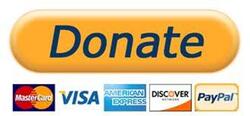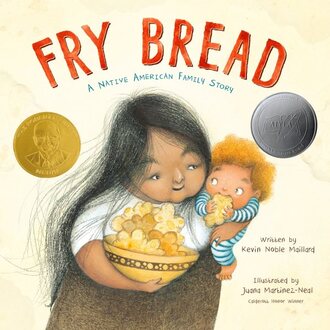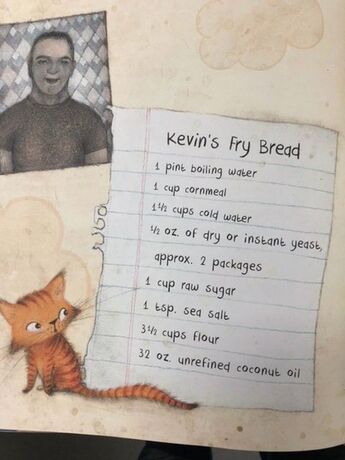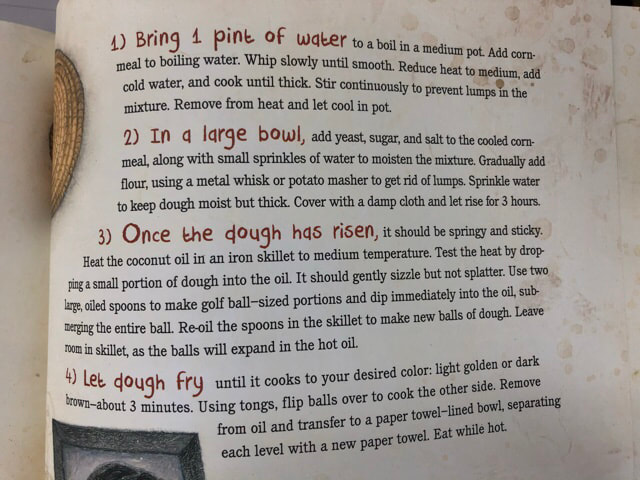Fry Bread: A Native American Family Story
by Kevin Noble Maillard; illustrated by Juana Martinez-Neal
by Kevin Noble Maillard; illustrated by Juana Martinez-Neal
The verse and illustrations of this award-winning picture book teach us many things, as a diverse group of children help a grandmother make a family recipe to be enjoyed by many, where the process is as important as the product. Delve deeply in the extensive back matter that includes many ways to understand fry bread’s significance, historical information, and contemporary feelings -and remember to peek under the dust jacket! The endpapers include the names of the several hundreds of recognized tribes and those still in the process of being recognized, which serves to reinforce the fact that Native Americans are alive and thriving. Just like there is no one type of person that represents all Native Americans, there is no one recipe that is accepted by all -even within the author’s own family!
Listen to the story
Recorded reading with permission from Macmillan
Do a craft!
Take-and-Make basket-weaving kits can be picked up curbside starting on January 19th.
Call or email the library at 426-3581 or [email protected] to schedule a pickup.
If you joined the program late and missed the craft pick-up, you can still do the craft at home using the instructions.
Paper-cup Basket-Weaving instructions can be found here.
Call or email the library at 426-3581 or [email protected] to schedule a pickup.
If you joined the program late and missed the craft pick-up, you can still do the craft at home using the instructions.
Paper-cup Basket-Weaving instructions can be found here.
Big Ideas & enduring Understanding
- Native American and Indigenous communities are thriving and diverse.
- Poetry doesn’t need to rhyme and takes many forms.
- Traditions can be passed down from generation to generation.
- Food brings people together.
Dig a little Deeper
|
Beyond the Book: Ideas, Questions, Projects and Connections:
|
KEVIN'S FRY BREAD RECIPE
|

Jaquith Public Library
Old Schoolhouse Common
122 School St. Room #2
Marshfield, Vt 05658
802-426-3581
[email protected]
© Jaquith Public Library 2018


